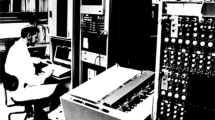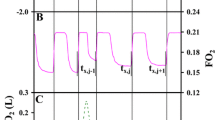Abstract
We have developed a gas exchange simulation system (GESS) to assess the quality control in measurements of metabolic gas exchange. The GESS simulates human breathing from rest to maximal exercise. It approximates breath-by-breath waveforms, ventilatory output, gas concentrations, temperature and humidity during inspiration and expiration. A programmable motion control driving two syringes allows the ventilation to be set at any tidal volume (V T), respiratory frequency (f), flow waveform and period of inspiration and expiration. The GESS was tested at various combinations of V T (0.5–2.5 l) and f (10–60 stroke · min−1) and at various fractional concentrations of expired oxygen (0.1294–0.1795); and carbon dioxide (0.0210–0.0690) for a pre-set flow waveform and for expired gases at the same temperature and humidity as room air. Expired gases were collected in a polyethylene bag for measurement of volume and gas concentrations. Accuracy was assessed by calculating the absolute and relative errors on parameters (error = measured−predicted). The overall error in the gas exchange values averaged less than 2% for oxygen uptake and carbon dioxide output, which is within the accuracy of the Douglas bag method.
Similar content being viewed by others
Author information
Authors and Affiliations
Additional information
Accepted: 4 June 1998
Rights and permissions
About this article
Cite this article
Prieur, F., Busso, T., Castells, J. et al. A system to simulate gas exchange in humans to control quality of metabolic measurements. Eur J Appl Physiol 78, 549–554 (1998). https://doi.org/10.1007/s004210050459
Issue Date:
DOI: https://doi.org/10.1007/s004210050459




